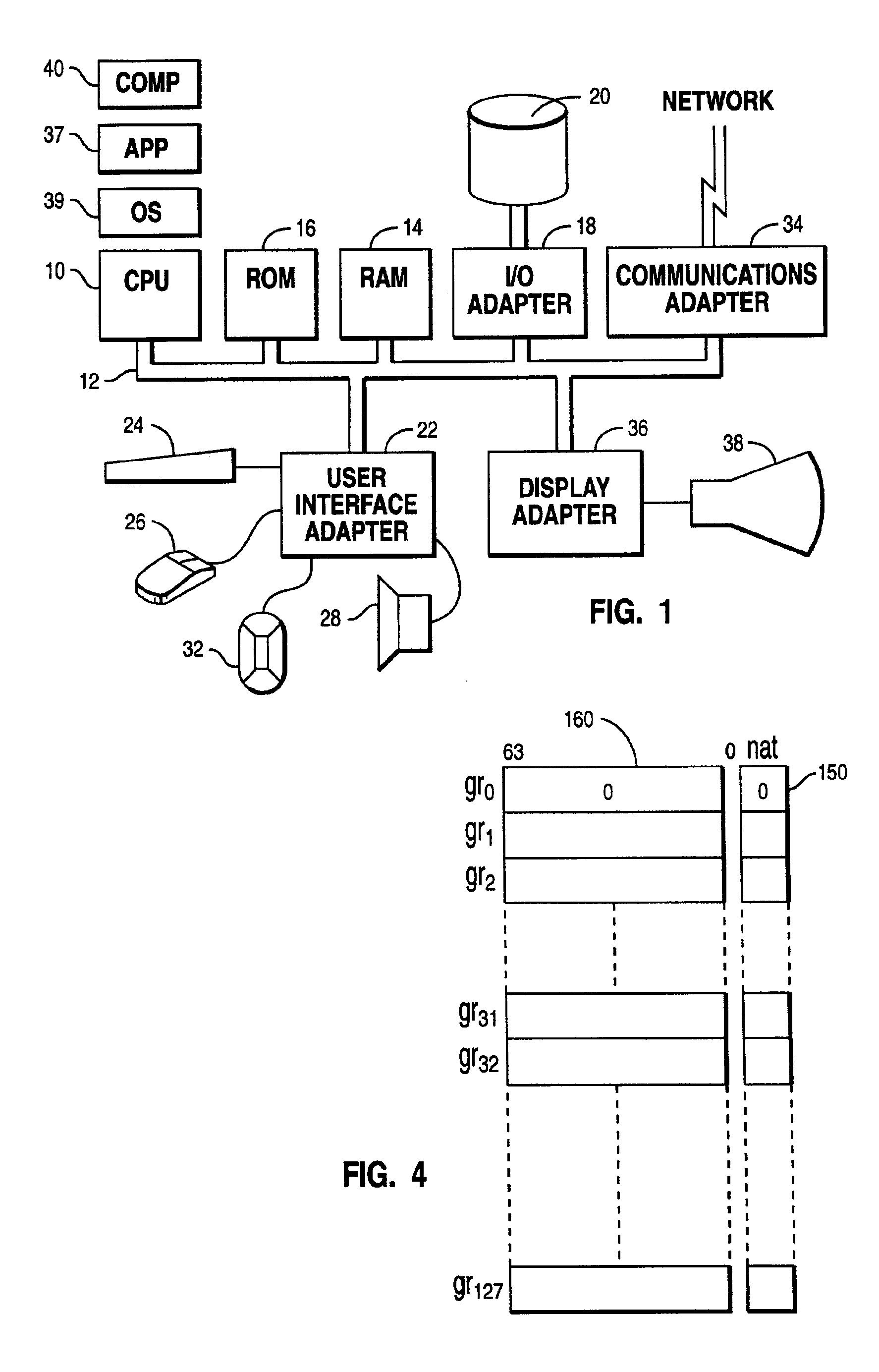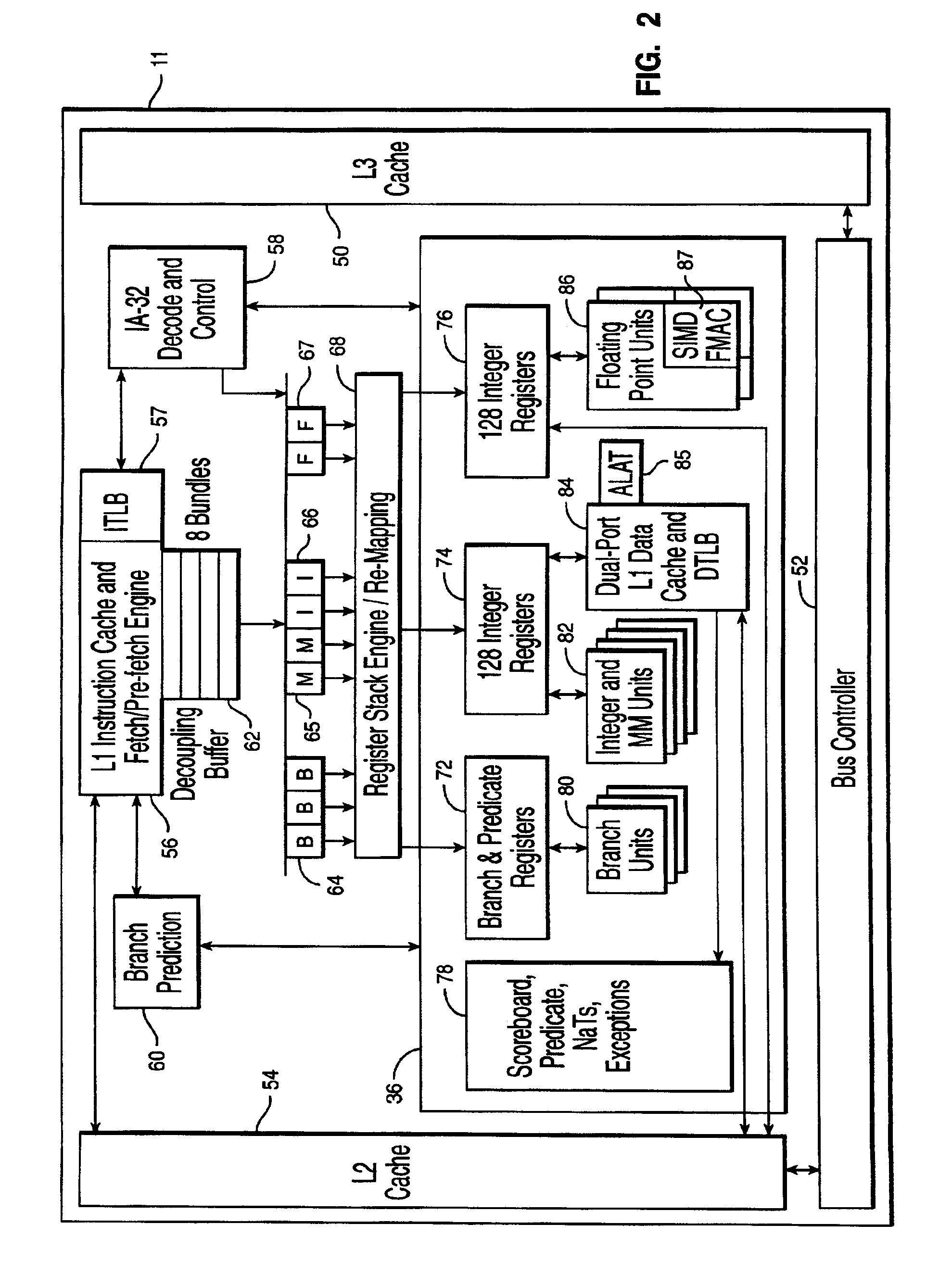Microprocessor for executing speculative load instructions with retry of speculative load instruction without calling any recovery procedures
- Summary
- Abstract
- Description
- Claims
- Application Information
AI Technical Summary
Benefits of technology
Problems solved by technology
Method used
Image
Examples
Embodiment Construction
[0029]In modern computers, loading data as early as possible is very useful for increasing the speed of the systems. If the data is not in the cache when loaded by the program, execution must wait while the data is retrieved from memory. This delay is known as memory latency and leads to a desire to execute load instructions as early as possible, preferably so early that even waiting for memory is not a problem. Realistically, the compiler can try to eliminate at least some of the memory latency delays by moving loads earlier in the instruction stream. The IA-64 architecture includes a speculative load instruction (ld.s) to obtain data earlier rather than later and it uses the NaT bit to ensure that the early retrieved data is still valid when used. A speculation check (chk.s) instruction checks the NaT bit to confirm the validity of the prefetched data, but causes a branch to recovery routines when the data is invalid. Another aspect of the IA-64 architecture allows an advanced loa...
PUM
 Login to View More
Login to View More Abstract
Description
Claims
Application Information
 Login to View More
Login to View More - R&D
- Intellectual Property
- Life Sciences
- Materials
- Tech Scout
- Unparalleled Data Quality
- Higher Quality Content
- 60% Fewer Hallucinations
Browse by: Latest US Patents, China's latest patents, Technical Efficacy Thesaurus, Application Domain, Technology Topic, Popular Technical Reports.
© 2025 PatSnap. All rights reserved.Legal|Privacy policy|Modern Slavery Act Transparency Statement|Sitemap|About US| Contact US: help@patsnap.com



